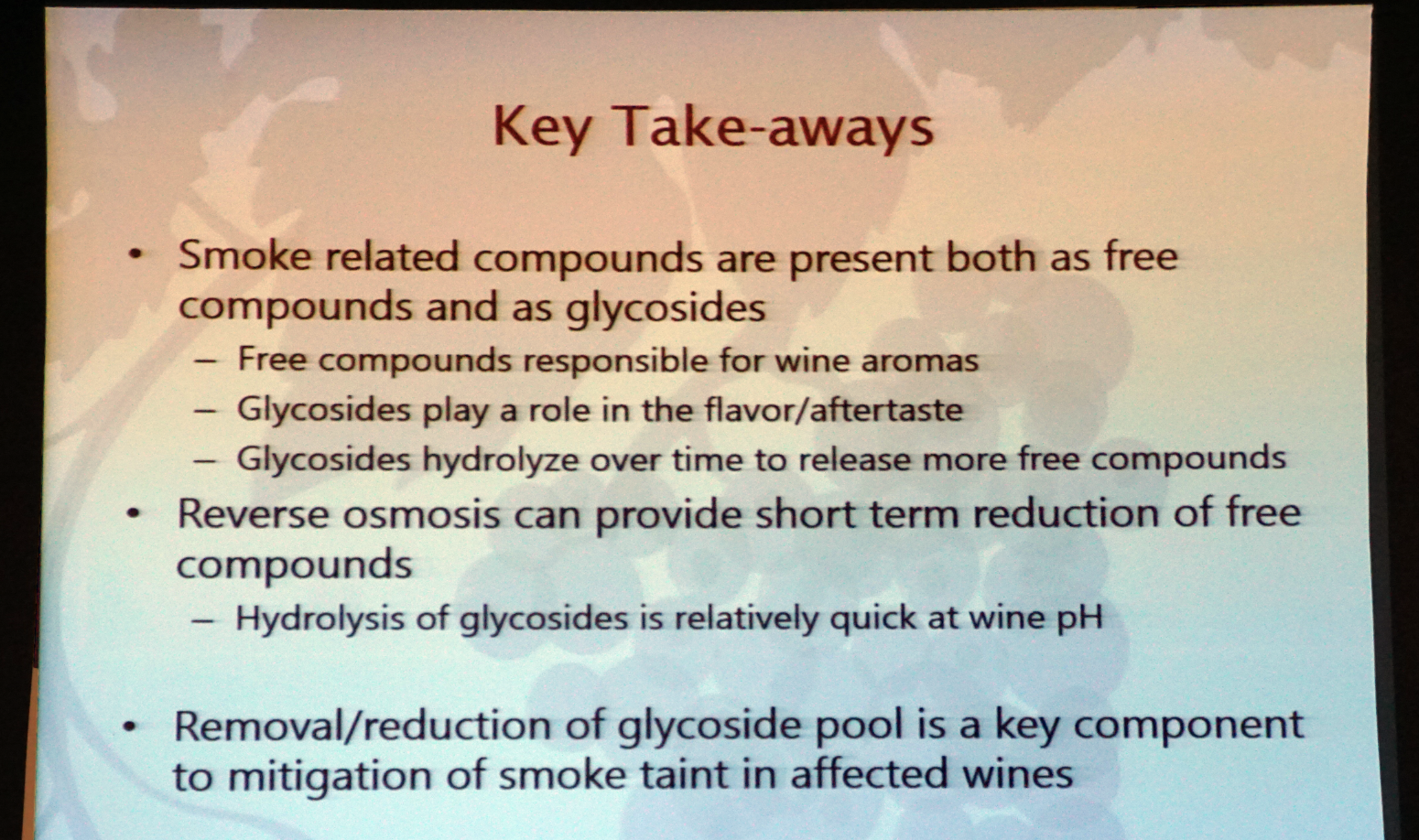California winegrape growers battened down the hatches when fires swept through Sonoma and Napa last year, and 2018 looks to be another year where fires will be a concern to monitor for vineyards in California and Washington State.
Here’s a look at what vineyard managers can do to mitigate damage and manage vineyards affected by fire, with advice from Washington State University experts and the Australian Wine Research Institute.
The topic of wildfires and what winegrape growers can do was taken up at the most recent Unified Wine & Grape Expo.
Mark Krstic of the Australian Wine Research Institute brought an international perspective to the issue from Australia, where fires are common most years, usually set by lightning.
“We have a real long history of bushfires in Australia,” Krstic said. “A 30-minute exposure from fire up close can cause (smoke taint) problems.”
He said the winegrape industry has lost money due to fires in excess of half a billion dollars in recent years.“We’ve got companies that were really affected 3 years out of 5, and are (examining risk to try to avoid it),” Krstic said.
“Grapevines are sensitive to uptake when berries are present on the vine,” he told the crowd of vineyard professionals. “As soon as we’ve got fruitset and berries start to grow, that risk increases.”
The highest risk period for problems, he said, is from veraison to harvest. Red wines can be more affected than whites because smoke gets concentrated in berry skins (see above). “The only good news I can give you about smoke taint is if you’ve had problems one year it doesn’t carry over to the next year,” he said.
The problem with smoke exposure is chemical in nature: if the glycocides are in the wine, it gets worse as time goes on. Problems can show up three to six months after bottling, he said.
Phenols, which lead to the glycosides, are highest in concentration in smoke at the time of the fire’s ignition.
Scientists who measure the chemistry of smoke have found the concentration of those harmful molecules drops, with a half-life of four to eight hours.
“It’s important going forward to engage with atmospheric chemists to get insight into some of those risks,” Krstic said. “Linking chemistry to sensory is not a perfect science.”
Carbon fining experiments, the results of which are in the above image, are relatively new work he said, begun in the past year.
There are some actions growers can take to mitigate smoke damage, though, seen below. They include hand harvesting, keeping fruit cool, and pressing whole bunches of grapes.
Tom Collins of Washington State University discussed smoke taint markers and where they come from.
He’s studying smoke taint in grapes, and has been working on it since 2016.
Over time Collins said he has seen free volatiles increase in wine that was exposed to smoke. That’s true even for wines treated with reverse osmosis.
“Wines were treated between April and June of 2009,” he said. “(In a) sensory test in December…more than 60% of the wines that we’d treated in June were perceptibly tainted again.”
It’s a complicated problem he said, because compounds are present both as free compounds and glycosides.
Grapes and wines don’t necessarily smell smoky, and bitterness can linger in a wine’s aftertaste.
Below are some key takeaways for winegrape growers and vineyard managers keeping an eye on fires in wine country this year.

